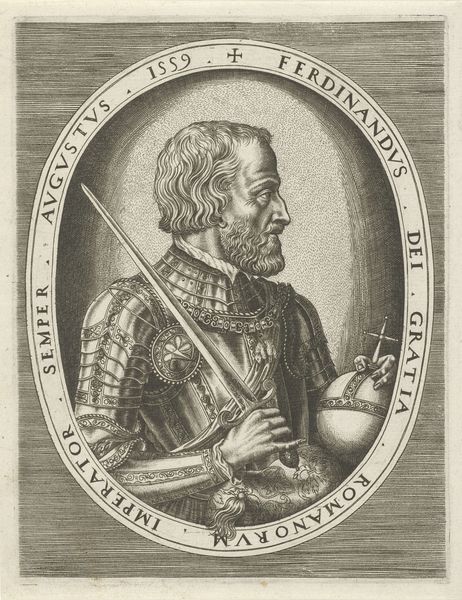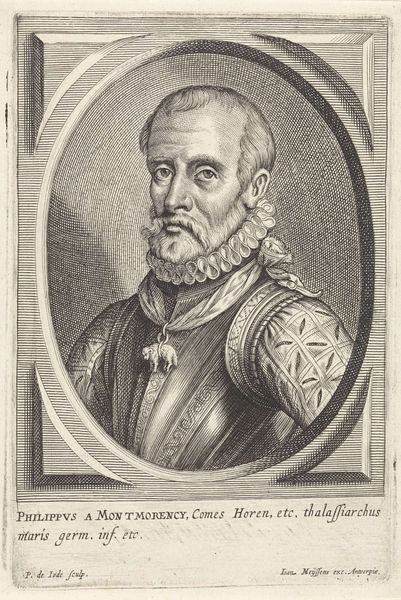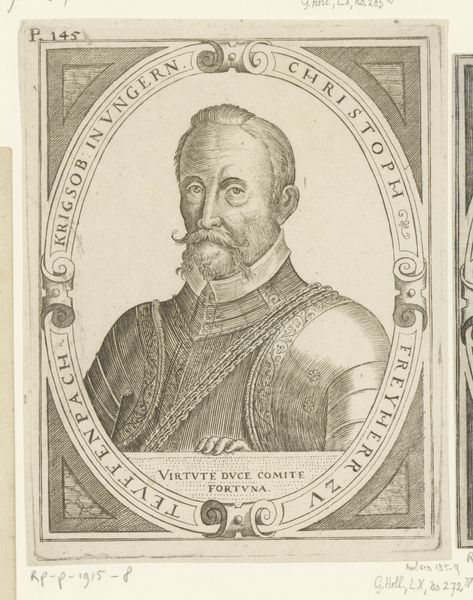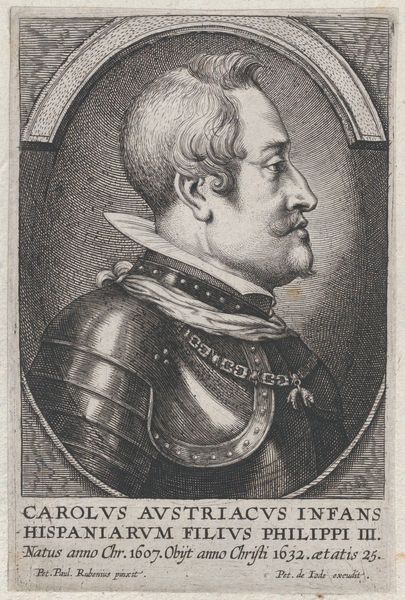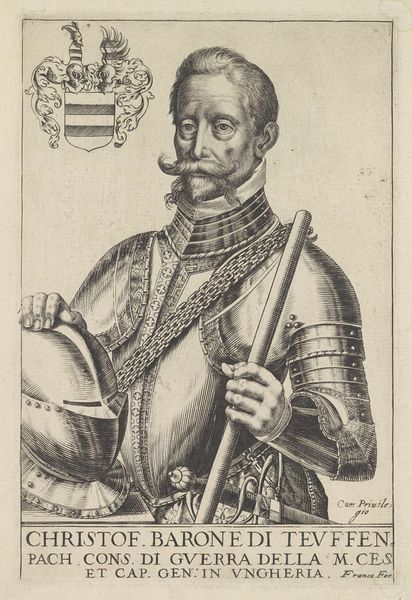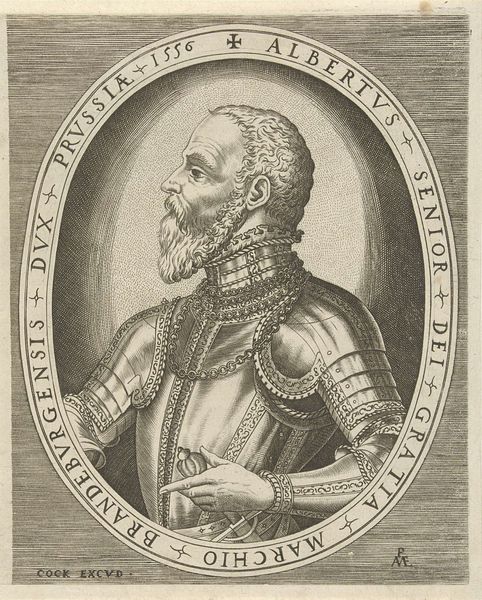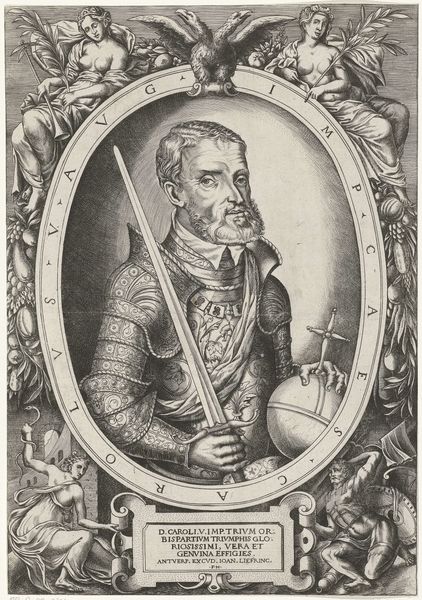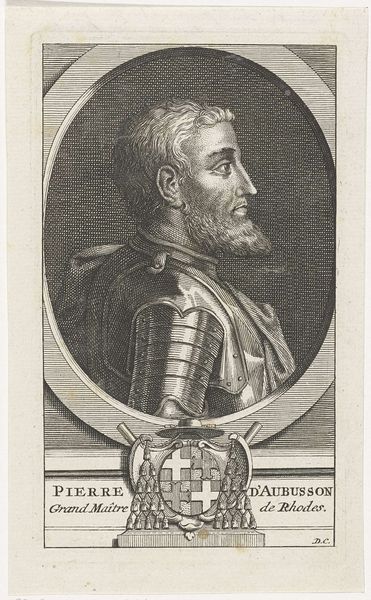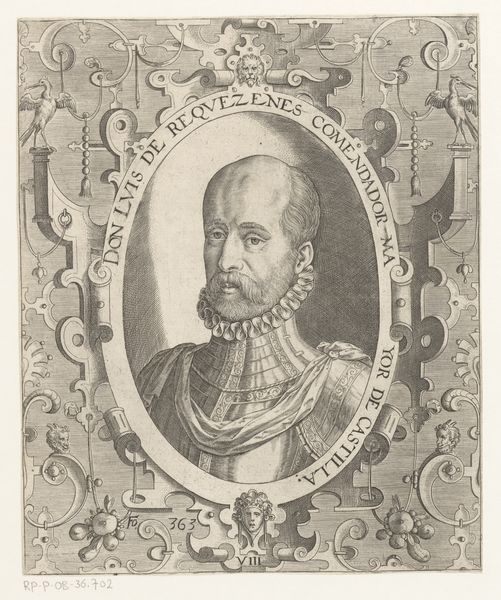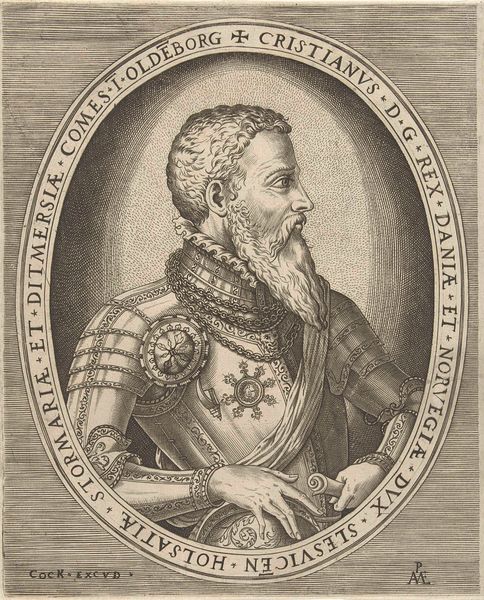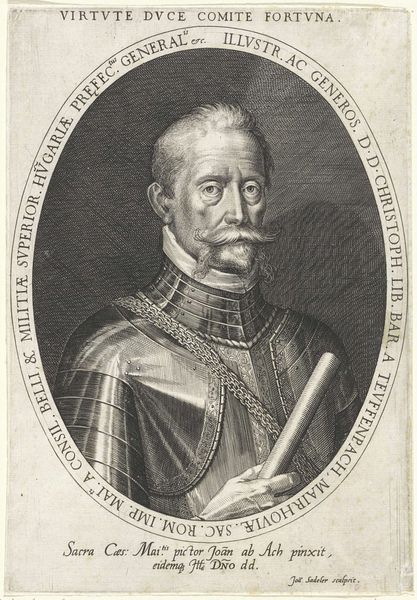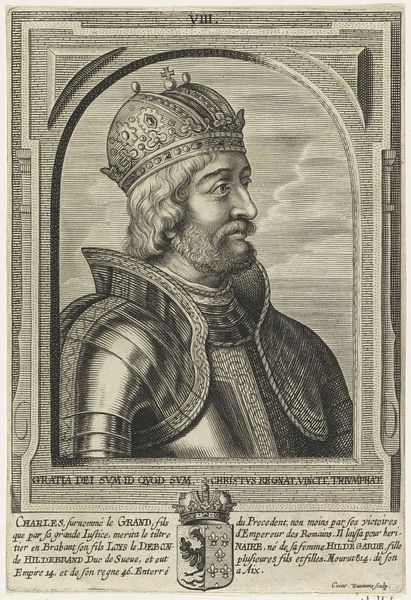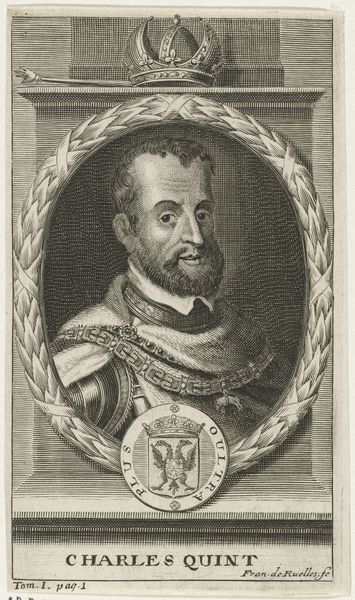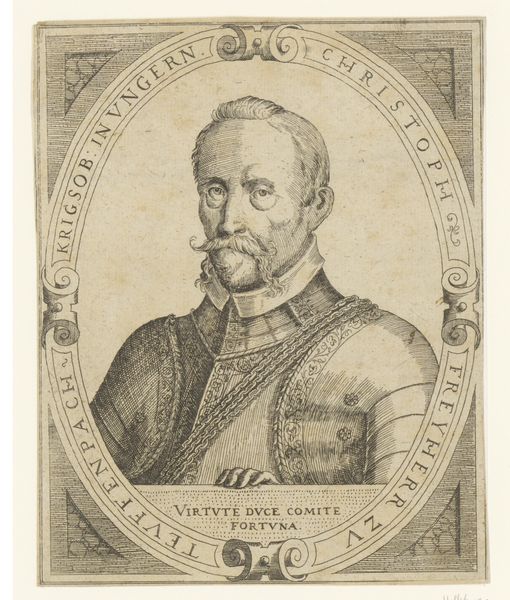
engraving
#
portrait
#
baroque
#
old engraving style
#
caricature
#
portrait drawing
#
history-painting
#
engraving
Dimensions: height 216 mm, width 155 mm
Copyright: Rijks Museum: Open Domain
Curator: Look at this intriguing engraving by Gerard Bouttats, dating roughly from 1655 to 1668. It’s a portrait of Giovanni Gioacchino di Passano. Editor: My first impression is one of austere formality. The tight, controlled lines of the engraving contribute to a sense of contained power and status. He seems important but almost unapproachable. Curator: Precisely. This style, situated in the Baroque period, utilized portraiture to project a sitter's status and lineage. Note the details in the armor, and especially the Maltese cross, likely emphasizing his aristocratic status and perhaps hinting at military or religious affiliations. What symbols do you notice at play? Editor: Well, aside from the obvious indicators of nobility and perhaps military prowess signaled by the armor, the laurel wreath framing him like a classical bust suggests eternal glory and valor, almost canonizing him within a historical narrative of greatness. The scepter, held so casually, suggests an inherited authority. The whole image becomes a codified statement. Curator: The act of engraving itself further solidifies this man’s place. The detailed lines convey a texture and richness, reminiscent of illuminated manuscripts. It feels intentional, preserving a likeness for posterity while simultaneously making a statement about social hierarchy. Editor: It makes me consider the function of such portraits at the time. Beyond mere likeness, this was about constructing and disseminating a public image, almost a carefully curated brand identity long before marketing was even conceived. He is Count di Carinola and Baron di Wavs, his name proclaims it for all. It's fascinating how such visual tools were deployed to cement socio-political structures. Curator: It's as though Bouttats has captured more than just Giovanni's likeness; he has given form to the entire system supporting him. The symbolism and imagery weave together, presenting not just an individual but also an ideal. A meditation on the permanence of power, frozen in time. Editor: Thinking about it, this engraving gives such lasting insight into that era’s psychology around identity. It wasn’t just what one did but how one was seen to do it. That's still pertinent, isn't it? Curator: I find that enduring relevance what continues to draw me to works like these. There’s still something timeless about those needs for meaning and belonging.
Comments
No comments
Be the first to comment and join the conversation on the ultimate creative platform.
